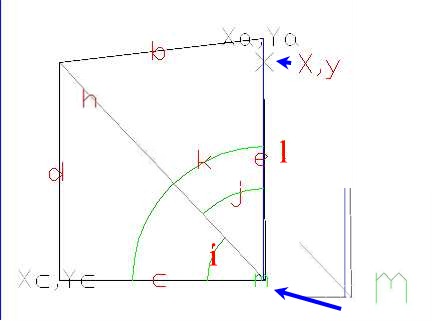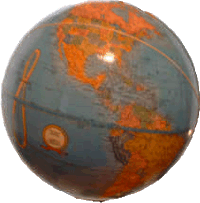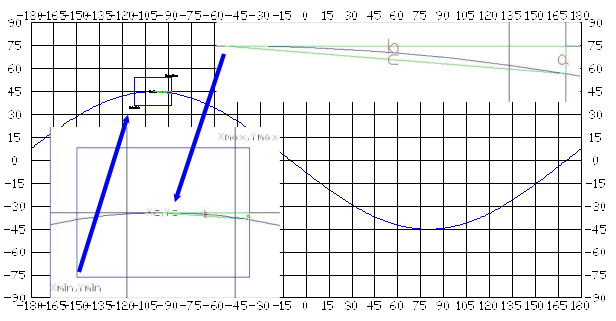Xc = -100 Yc= 45
X = -88 Y= 54
xAdj = -91.57181607244216 yAdj= 54.98270834089053
xAdjS = -91.51471862576143 yAdjS= 54
a = -0.983357966978744
b = 8.485281374238571
c = 8.542071931985857
d = 9
e = 9.983357966978744
f = 1
g = 1
h = 12.408343680412008
i = 46.49534150578617
j = 42.85102636443159
k = 89.34636787021776
l = 9.98270834089053
m = 0.11388800442802265
n = 8.428183927557834


 The basic concept for this method is that an "
artificial equator" runs through the center of the mapped area. The band on the globe
at the left illustrates this. The state of South Dakota in the United States was choosen as the area to map.
The Band is shown passing through the middle of the state.
The basic concept for this method is that an "
artificial equator" runs through the center of the mapped area. The band on the globe
at the left illustrates this. The state of South Dakota in the United States was choosen as the area to map.
The Band is shown passing through the middle of the state.